 "Urambo Tauro" (urambotauro)
"Urambo Tauro" (urambotauro)
04/09/2018 at 13:00 ē Filed to: wrenching, rustventures
 5
5
 11
11
 "Urambo Tauro" (urambotauro)
"Urambo Tauro" (urambotauro)
04/09/2018 at 13:00 ē Filed to: wrenching, rustventures |  5 5
|  11 11 |
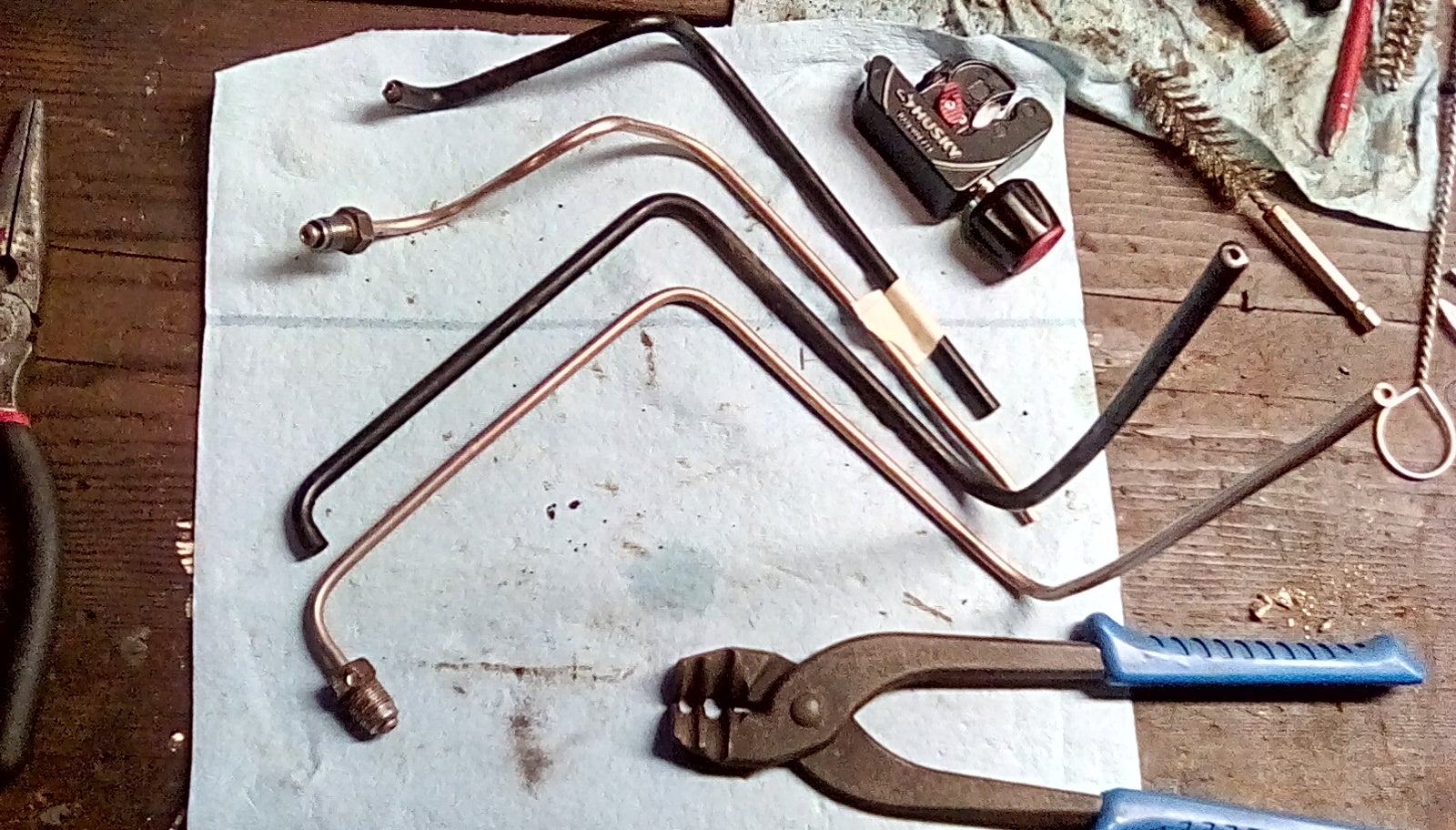
And Iím not even done yet!
I have another post coming up later about getting my sisterís !!!error: Indecipherable SUB-paragraph formatting!!! back on the road, and I promise there will be some Saab updates too, but I wanted to show you guys these brake lines.
This came off of a 2001 Silverado. Itís the line that runs underneath the radiator to go feed the RF caliper:
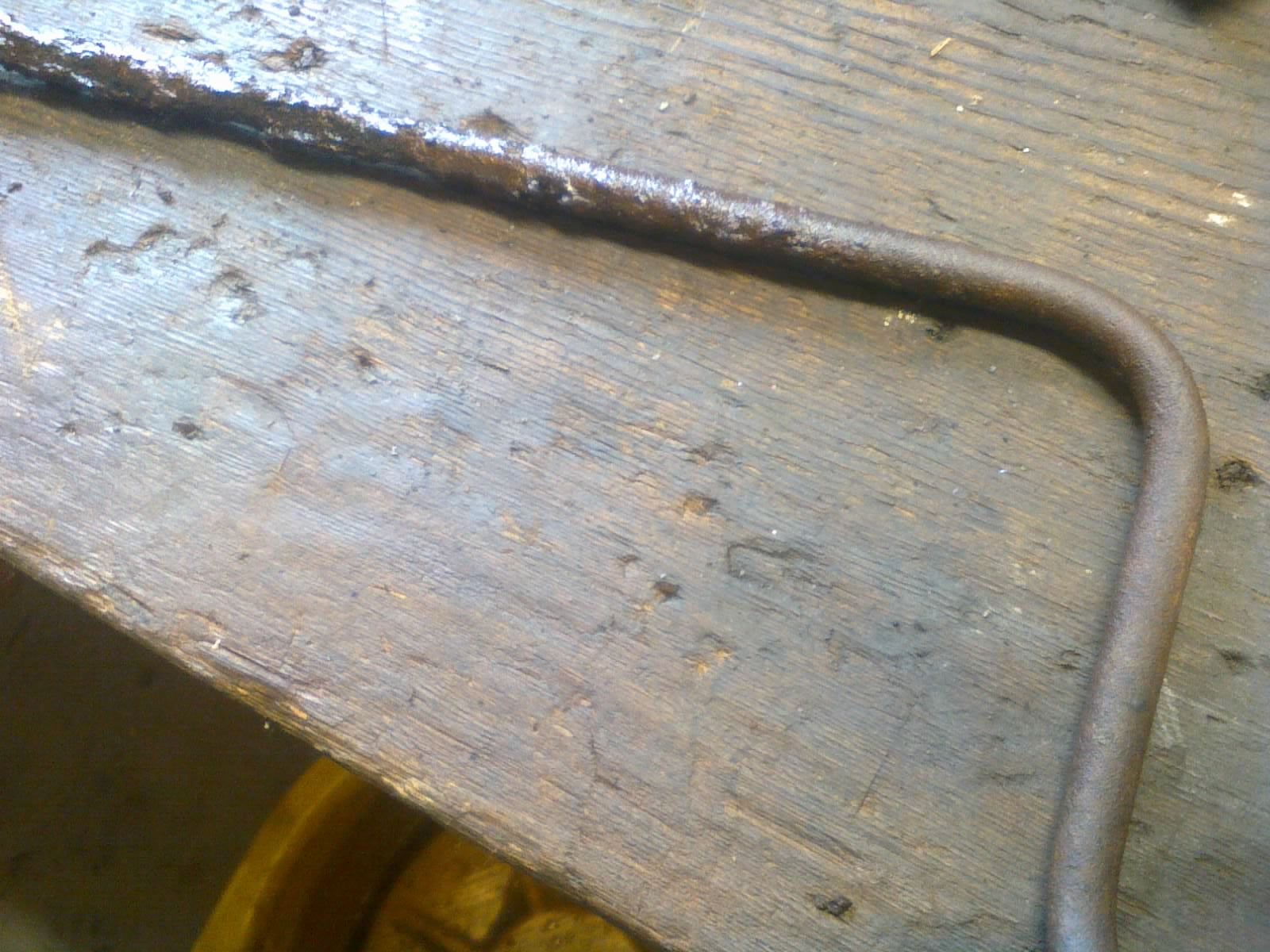
You see, here in Michigan we donít have yearly vehicle safety inspections (some commercial vehicles get a regular DOT inspection, though). Salt is a way of life, so we certainly donít go condemning every brake line that happens to have some rust on it. No, thereís a big difference between surface rust, and a flaking section of tubing thatís about to pop.
And this one sure as hell popped.
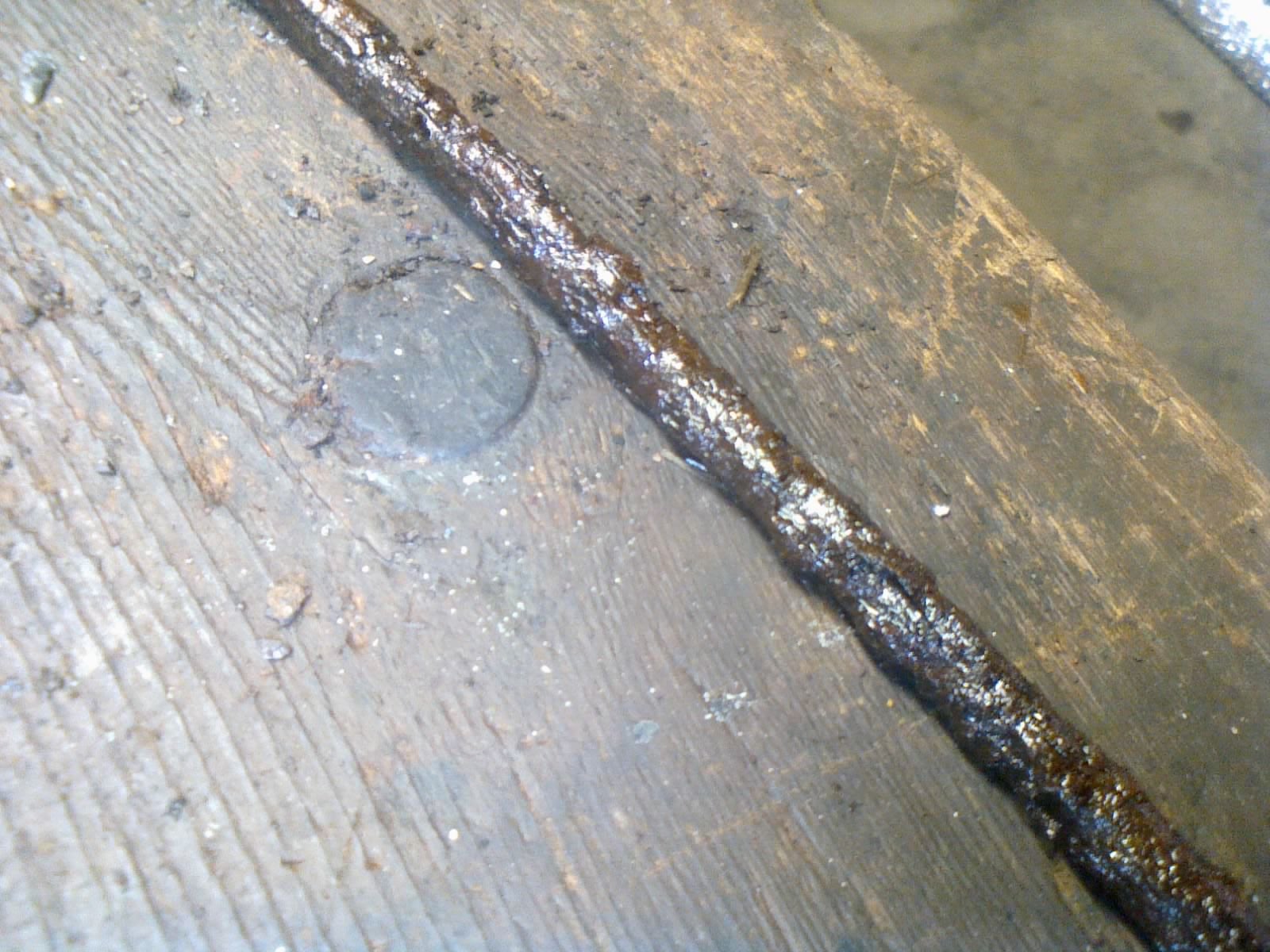
Ya like them flakes? Check out the caliper it goes to:
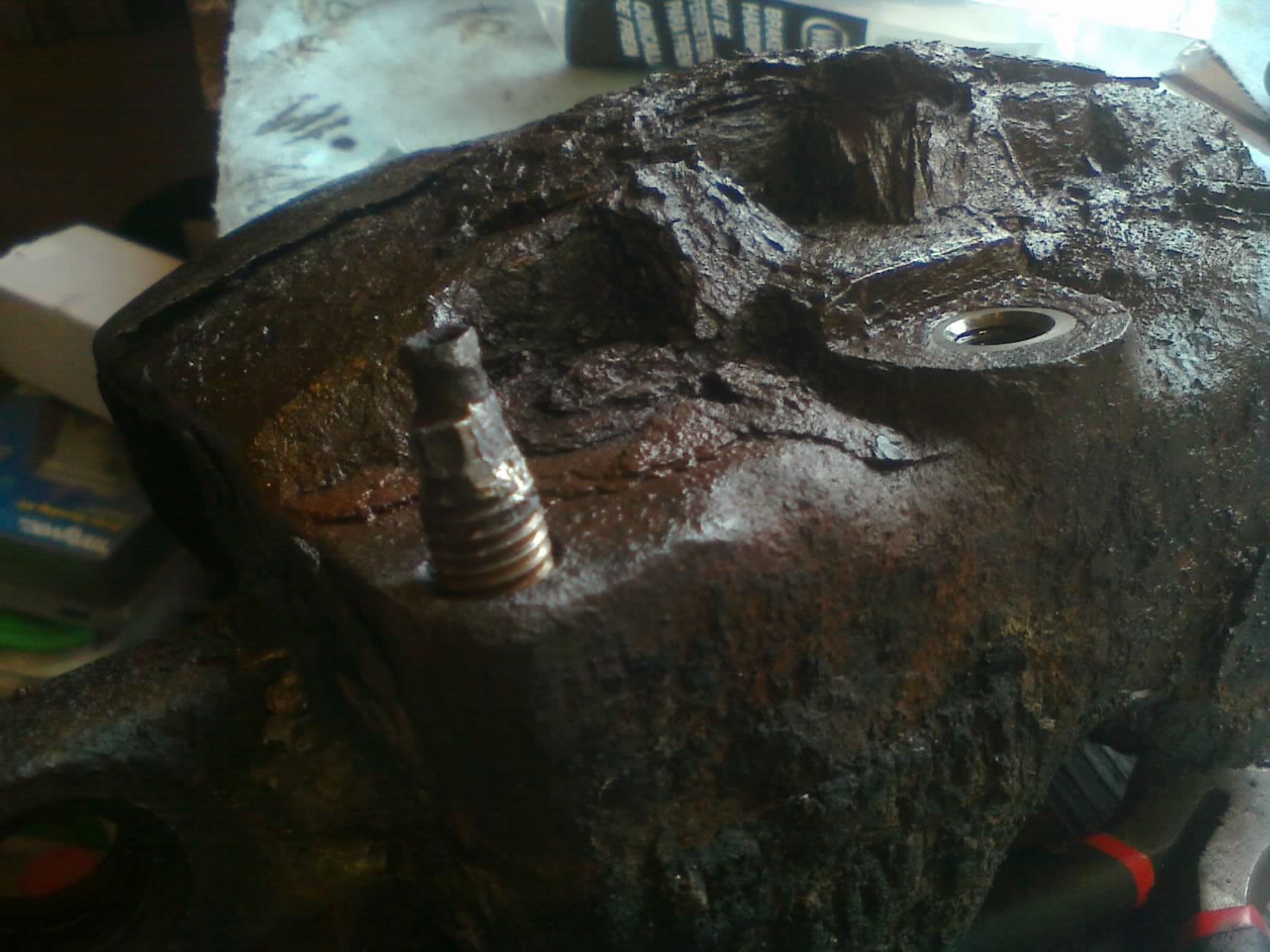
It is a MIRACLE this bleeder screw came out. I was sure that it was going to shear in two. But after some wire brushing, penetrating oil, propane torching (I donít have oxy/acet), and ďFreeze-OffĒ to cool the bleeder back down, the Vise Grips managed to twist the whole thing free. I guess this caliper isnít getting replaced quite yet after all!
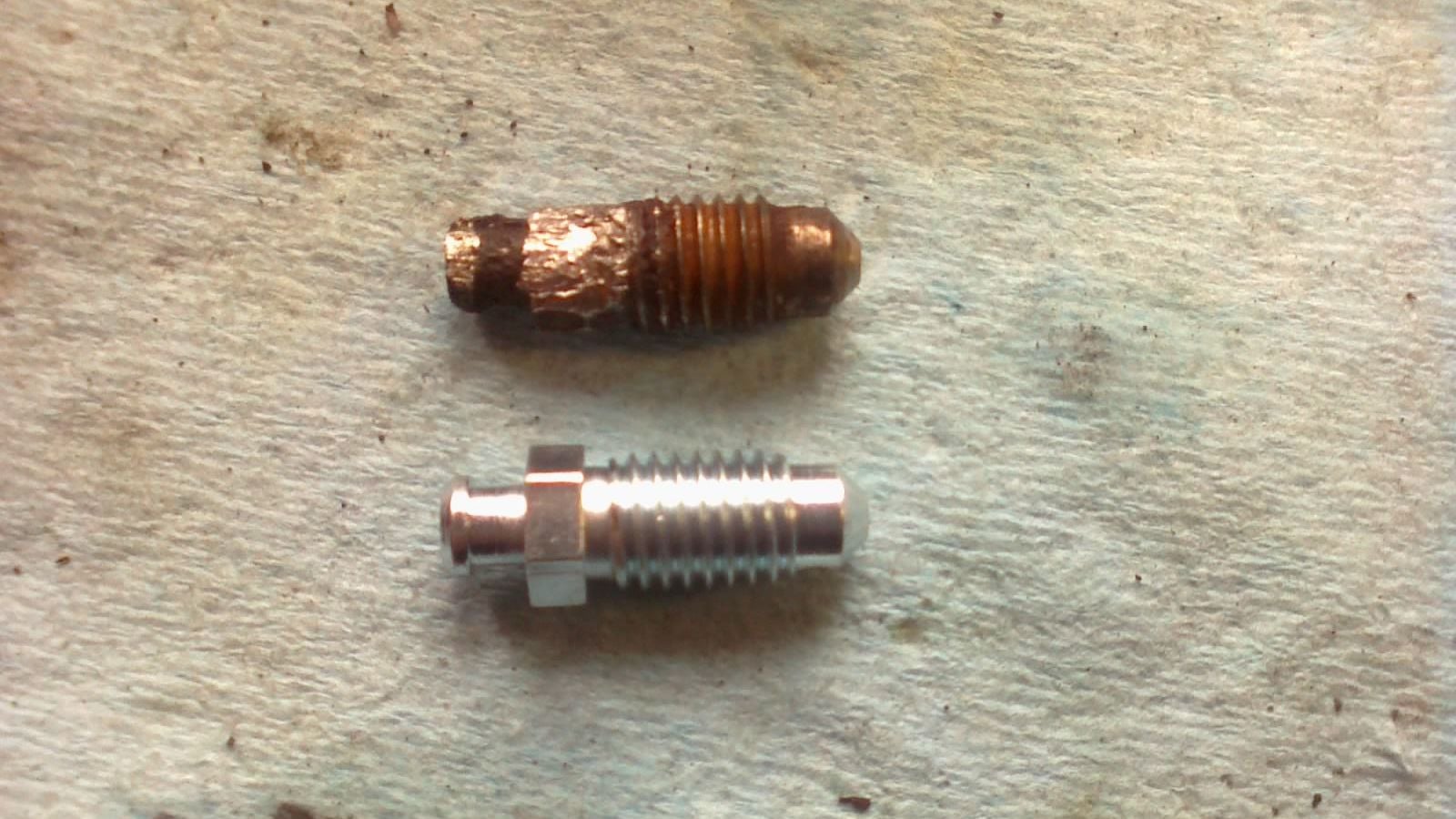
Ran into a problem, though, and this is why the truckís still out of commission for the moment. The plan was to splice some new !!!error: Indecipherable SUB-paragraph formatting!!! into a serviceable section of original steel line, but my flaring toolís press pushed the line right through the clamp without flaring it.
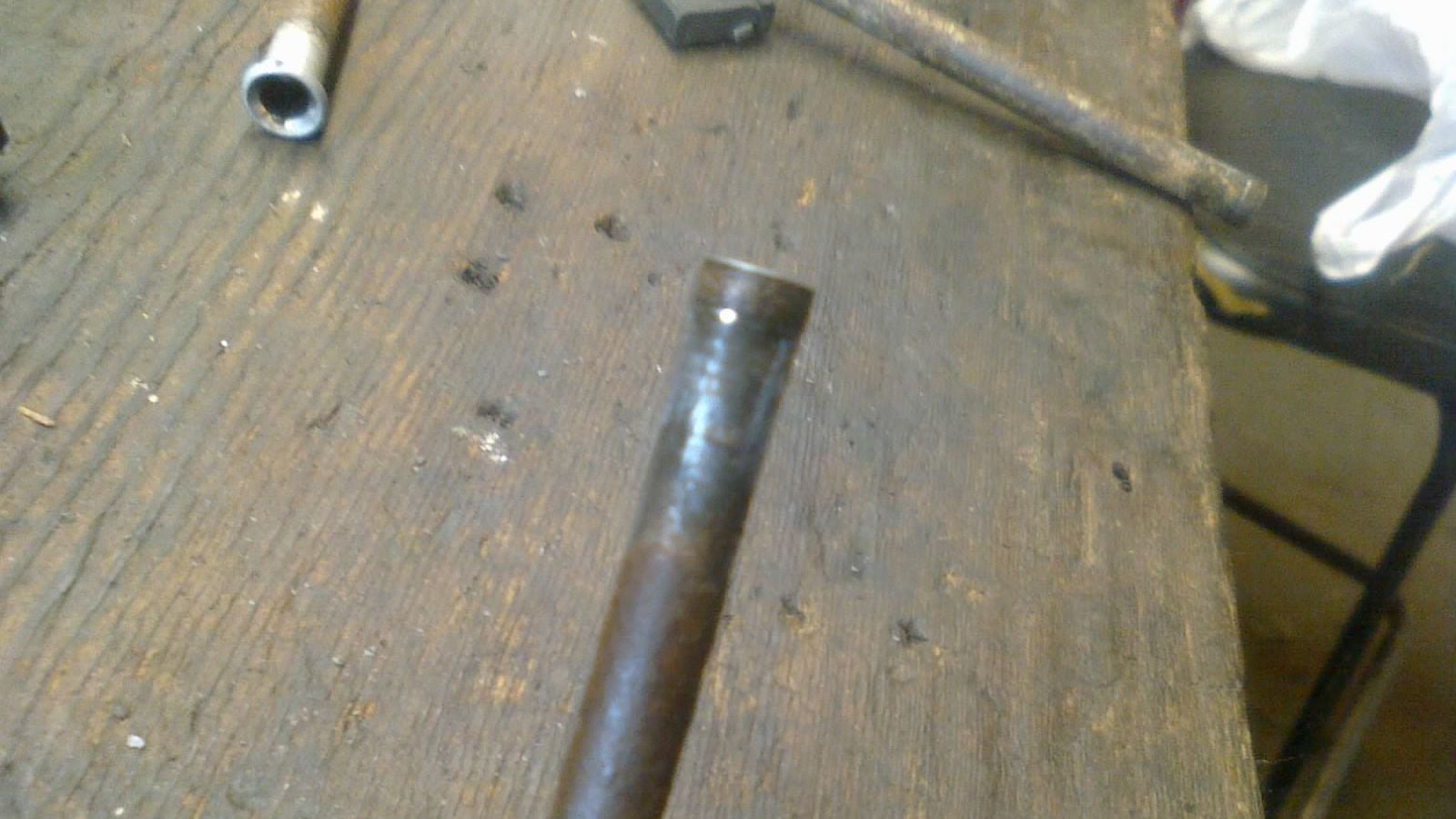
This pic is actually just a test piece, though. The section that has to be flared is still on the truck, but I was using this junk piece to teach my brother how to flare brake lines, and I wanted to show him how to do steel ones before moving on to the NiCopp. Either the clamp is still gripping too much rust and letting the good steel slide by, or My cheap flaring kit is a little too cheap.
Iíve got a hunch that itís the tool, and I probably need a clamp with better-machined non-chinesium grooves in it. This one has always worked just fine, flaring NiCopp like a champ, and even 3/16" steel tubing. This is the first time Iíve tried to use it on 1/4" steel brake lines before.
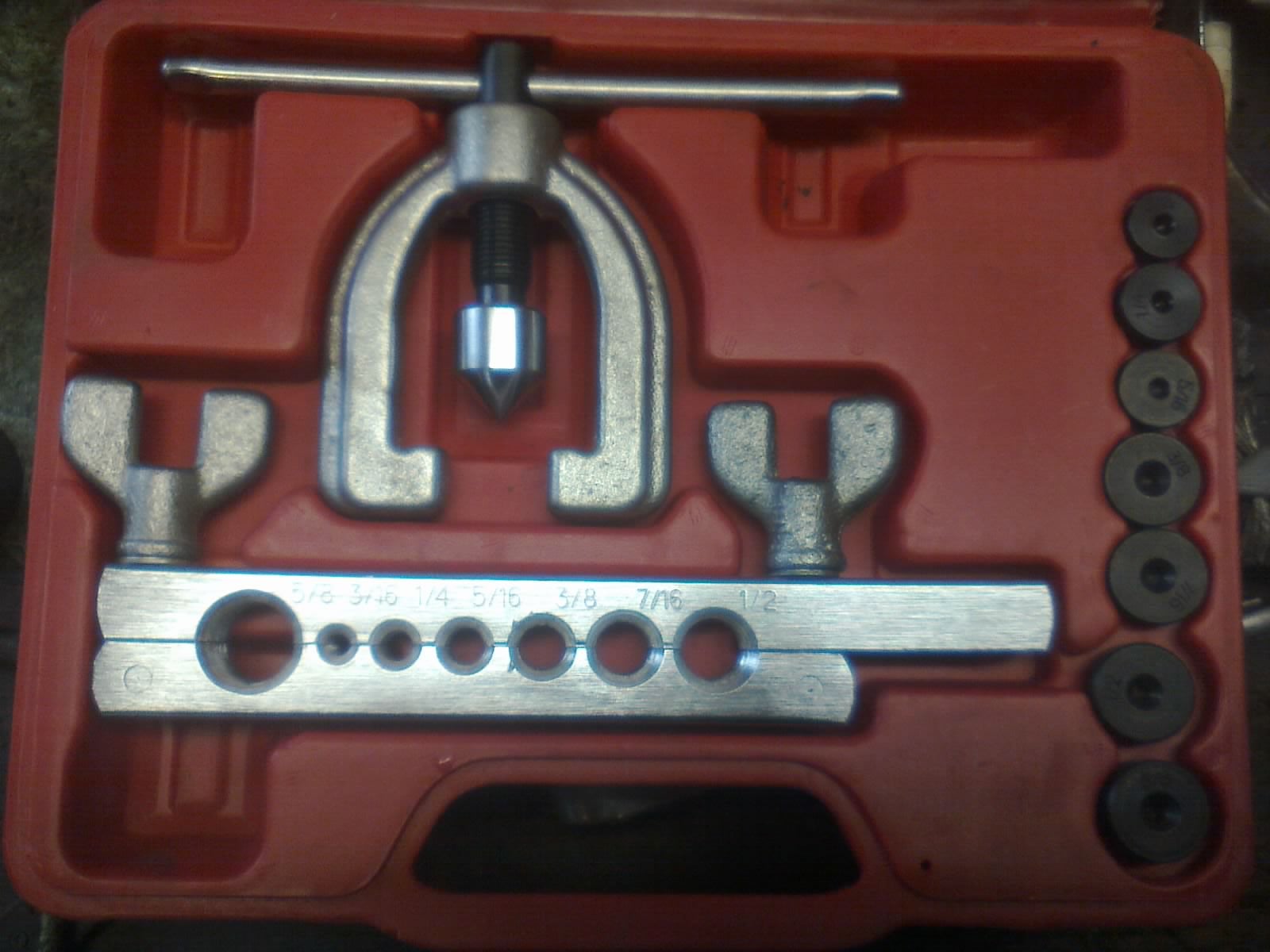
Maybe itís time to move on from this kit. Not sure Iím ready to drop $50 or whatever on a nicer one, though.
So the conundrum that Iím faced with is this: Should I pony up the cash for a real quality flaring tool, or should I try releasing the rest of the brake line from the truck, and replace the entire length with NiCopp? I was going to splice into the line in the engine compartment, but if I do the whole line, I have to go all the way to the ABS module, and if I go there, Iím afraid Iíll bump one of the other lines.
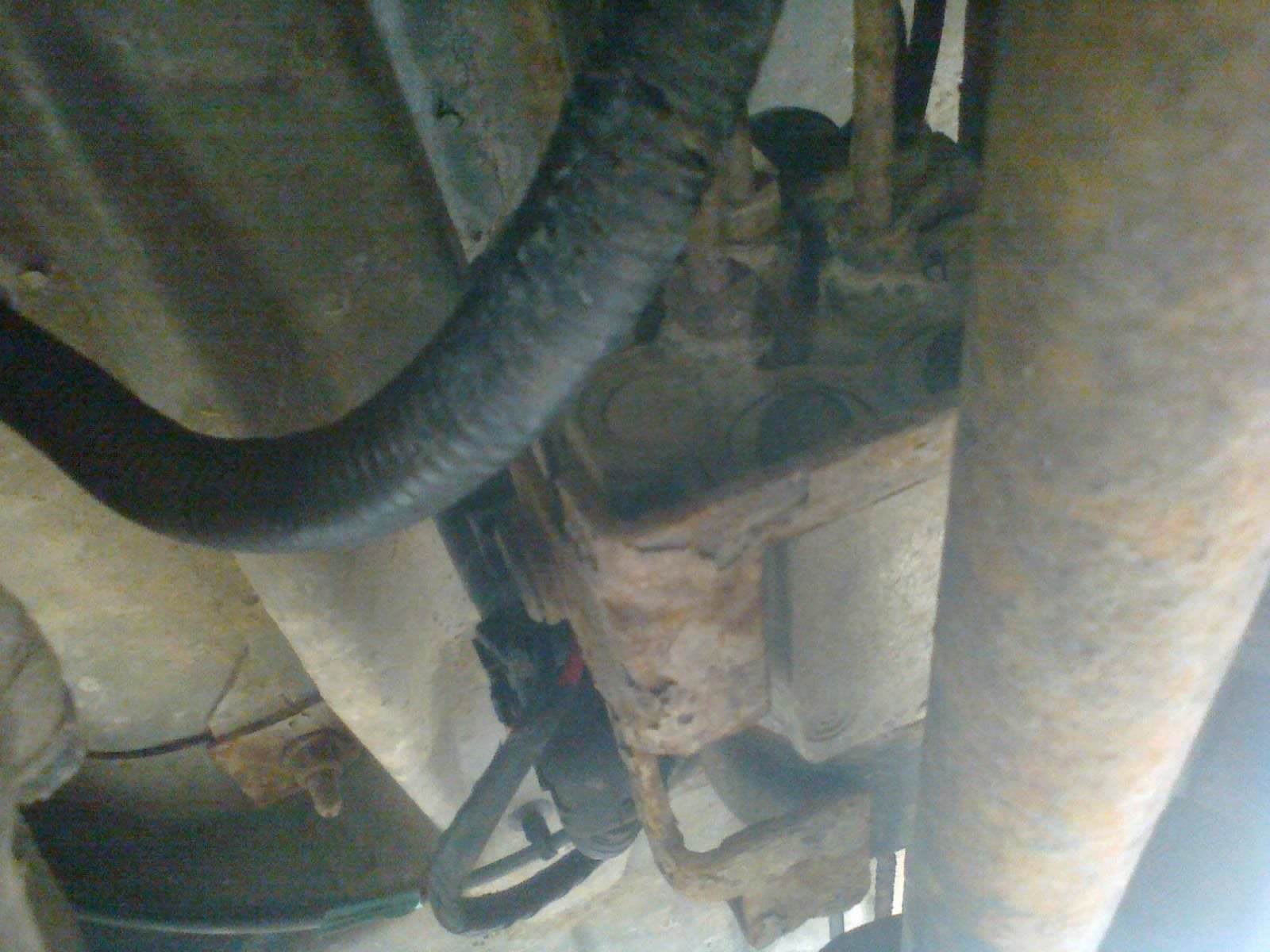
Really, ALL of the lines should be replaced anyway. I sure would, if it was my truck.
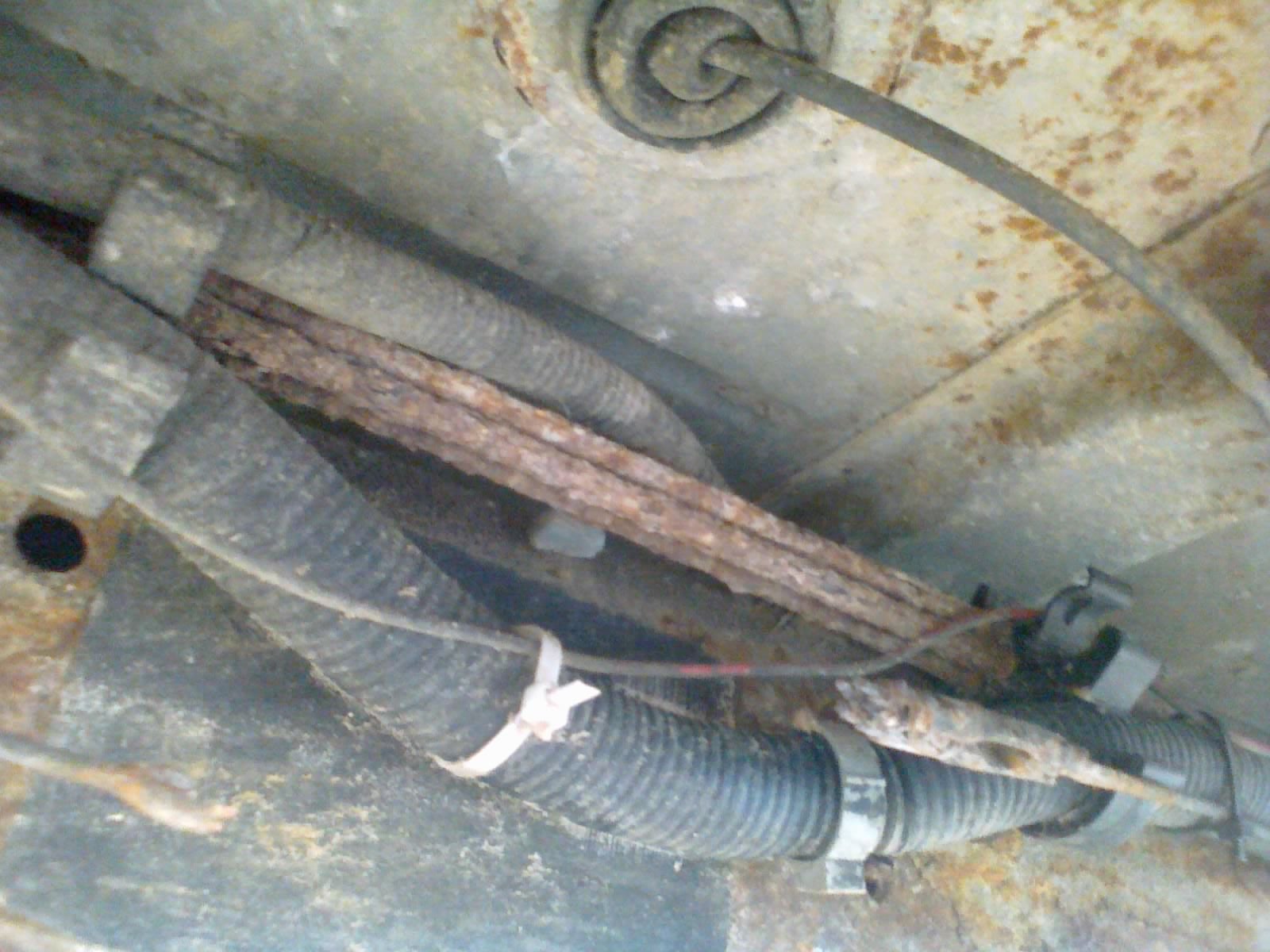
But the owner only wants to repair the one thatís currently leaking one, after which they can get rid of the truck ASAP before putting any more money into it. It could use more than just new brake lines...
 shop-teacher
> Urambo Tauro
shop-teacher
> Urambo Tauro
04/09/2018 at 13:13 |
|
You do enough of this work to justify the better tool, IMO.
 Urambo Tauro
> shop-teacher
Urambo Tauro
> shop-teacher
04/09/2018 at 13:17 |
|
Yeah, I guess Iím just mad at myself for wasting money on the cheap one in the first place. I donít wanna buy another one! But you know what they say- The only thing more expensive than buying the right tool the first time around, is buying a cheap one first and then having to buy the good one anyway.
 shop-teacher
> Urambo Tauro
shop-teacher
> Urambo Tauro
04/09/2018 at 13:25 |
|
Eh, sometimes it actually does make sense to buy the cheaper one first, because you may find out that you donít use it that much. You could always toss the cheap one of CL or FP marketplace for a few bucks to help ease the pain.
 Urambo Tauro
> shop-teacher
Urambo Tauro
> shop-teacher
04/09/2018 at 13:32 |
|
OR I can keep my money and replace just a few more feet of line. Itís tempting (but risky), and I have a few days to decide. Apparently the ownerís not in a big hurry.
 MasterMario - Keeper of the V8s
> Urambo Tauro
MasterMario - Keeper of the V8s
> Urambo Tauro
04/09/2018 at 14:05 |
|
I hate those cheap flaring kits...I borrowed one when I ran new NiCu lines one my F150 and it would not flare the lines properly. Everything keep going crooked/off-center. I think I spent more time flaring and re-flaring lines than actually removing and installing the lines.
 shop-teacher
> Urambo Tauro
shop-teacher
> Urambo Tauro
04/09/2018 at 14:12 |
|
You could, but I think youíll regret not getting the better tool in the long run.
 Urambo Tauro
> MasterMario - Keeper of the V8s
Urambo Tauro
> MasterMario - Keeper of the V8s
04/09/2018 at 14:21 |
|
Hm, Iíve gotten so used to having to be extra-extra-careful to center the die perfectly... Are the nicer tools somehow self-centering?
 MasterMario - Keeper of the V8s
> Urambo Tauro
MasterMario - Keeper of the V8s
> Urambo Tauro
04/09/2018 at 14:28 |
|
Iím not sure. I just know I never want to use a cheap one again...no matter how careful I was or what I did it just seemed like a crap shoot as to whether or not the flare came out straight. I think itís partly due to NiCu being softer cause Iíve used those kits before on steel lines and never had so much trouble before, but those kits in general just donít seem well made.
 deekster_caddy
> Urambo Tauro
deekster_caddy
> Urambo Tauro
04/09/2018 at 15:36 |
|
Do you have a bubble flare kit? I hate brake lines, but using NiCopp and my new Bubble Flare tool made it a lot easier. I canít remember when I bought my bubble flare kit but it wasnít in stock anywhere. Iím pretty sure you need one for those and newer GMs.
 Urambo Tauro
> deekster_caddy
Urambo Tauro
> deekster_caddy
04/09/2018 at 16:03 |
|
I have a double flare kit, which involves two steps. If I skip the second step, it creates something that looks a lot like a bubble flare. Iím not sure if I can call it a TRUE bubble flare, though. Apparently there are some minute differences between DIN and ISO that I should probably pay more attention to. But itís been working well so far and Iíve never had one leak.
 deekster_caddy
> Urambo Tauro
deekster_caddy
> Urambo Tauro
04/09/2018 at 23:48 |
|
A bubble flare kit has a different insert is all. It is like stopping 3/4 of the way to a double flare. Took me many many tries to start making them right!